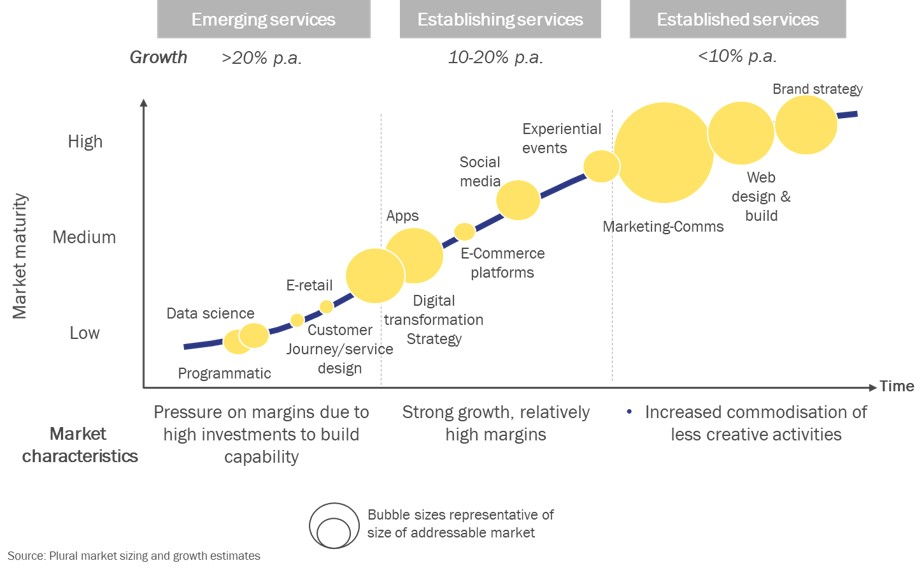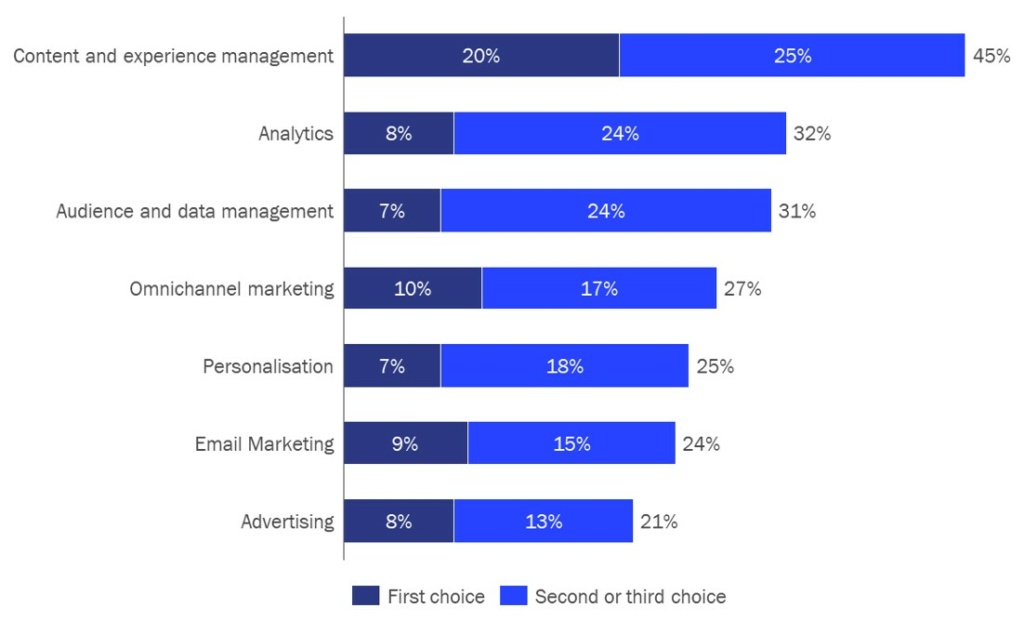The economist Joseph Schumpeter coined the term Creative Destruction to describe what he called “the essential fact about capitalism”: that innovation will bring down existing industries, products and processes, and replace them with newer, more productive ones.
In 2018, marketing and advertising is such an industry, part way through a rapid and unprecedented technological transformation. This is having a significant impact on businesses and business models in the sector. The incumbents, namely the global agency networks, will need to pursue radical reinvention to survive and thrive.
Marketing is dead, long live marketing
The recent ructions and share price declines at the marketing services groups (WPP, IPG, Omnicom, Publicis, Aegis Dentsu) have been put down to a range of factors. These include shareholders of FCMG groups pushing for reduced advertising spend, and Google and Facebook disintermediating agencies through their dominance of digital.
But while these factors have played a role, they’re symptoms of something far bigger, namely a seismic and structural shift in what marketing means. It is no longer just marketing but business that is digital. This has huge implications for how brands operate, where they spend money and what services and technologies they need. Mirroring this are the fundamental changes in how consumers consume information and transact, and what they expect from brands, creating an eternal feedback loop of communication between customer and brand.
The impact of these forces? Marketing as we knew it is dead – but marketing as we now know it is ubiquitous.
Every interaction is a form of marketing
Think of a car manufacturer. Fifteen years ago, its website would have primarily been a shop window for its products. A customer could browse the site, then order a hard copy of a brochure or contact a dealer.
Today, the same company’s web presence will be the front end of a complex set of integrated digital assets, technologies and business processes that allow customers to interact with the brand, and the business to operate. Not only can they now choose a model online, but they can also configure and order it, and organise the finance. And once they have the car, they can use an app to report a fault and book a service.
As components of the customer experience, each of these interactions is a form of marketing. Yet marketing and advertising alone can no longer control or define the experience. As a result, brands are focused on building and improving the customer experience by digitizing or automating parts of the business. They also increasingly recognise that if the experience is not good, spending on advertising will be wasted. This focus is reflected in where brands are diverting spend: all the growth is in areas supporting or driving digital transformation.
Market spend [source: Plural research and analysis]

Customer experience: the story, the promise and the reality
Up until recently, brands flourished by making promises and telling stories. The more compelling the promise, and the closer it was to reality, the more successful the brand. The agency networks sat at the heart of this, as authors-in-chief, with a number of fundamental skills and capabilities. These included:
- the skills to generate and harness customer insight, and use it to develop and implement communication strategies
- the ability to create and generate content and execute on it
- the scale, relationships and global networks to plan and buy media.
Now, the customer experience is the promise, the story and the reality. And the most successful brands (and most start-ups) embarking upon their own form of creative destruction, developing truly digitally-enabled experiences rather than products or services. Take owning a bicycle versus using a bike-sharing scheme. In the former, marketing is all about the product, the features, the transaction and status of ownership, all with a view to making a sale. In the latter, it’s all about building the experience.
Investing in the customer experience has therefore become a priority. For every dollar companies spend on pure marketing or advertising, they’ll spend 10 times as much on technology investments, process re-engineering and transformation programs. And because true digital transformation weaves technology, design, content, experience and data into the fabric of the business, CEOs, CFOs and CTOs are leading these projects – not CMOs. What’s more, to make the experience consistent, and keep control of the data it generates, brands are increasingly managing the customer journey themselves
You can see this shift in what marketers are focused on. When asked to rank their priorities for 2018, they cite customer experience and content generation as the most important, and advertising as the least. And five of the top seven are all capabilities they’re trying to build in-house.
Most important marketing priorities for organisations [ source: Adobe / econsultancy survey, n=2,798 organisations]

All change for the networks
These shifts present a structural challenge for marketing services networks: it’s not just competition that’s changing, but the fundamental basis of competition. Typically, the networks have organised as conglomerates, with separate brands and separate capabilities. These brands have even been known to compete with each other, as long as the business stayed within the group. Group-level holding companies provide finance, control and M&A strategy, with strategy and operations all sitting in the business units. Incentivisation also sits with the business units, limiting the rewards for collaborating with other parts of the group.
At the same time, large-scale digital and business transformation projects are being driven by consulting firms. What these firms may lack in creative expertise or content skills, they make up for in scale, profitability and C-level access. On average, the top five consulting firms have 3.4 times as many employees as their agency network peers [source: annual reports].
To succeed in the new world, these groups need to be able to operate at scale, across borders and in an integrated way. And as well as providing services to clients, they need to help clients build their own capabilities around technology, data and content, then (mostly) leave them to it. Unless groups can reconfigure, upskill towards data, and technology, and integrate to help their clients, the sum of their parts will remain greater than the whole. This will make them vulnerable to predatory acquirers or even break-up.
Time for creative destruction?
Networks’ capabilities, relationships and reach remain powerful. And helping brands to create compelling customer experiences can be at the core of what they do. But first, they may need to embark on their own creative destruction and be prepared to disrupt and re-building their own businesses.
From Plural Strategy’s work across the marketing sector, we believe there’ll be a significant prize for the groups that can:
- Define and articulate a relevant business strategy and proposition. This should:
- help their clients build digital, customer-centric businesses
- build on their core communication and creative skills
- harness existing technologies.
- Rapidly move away from the holding company model and build integrated units to deliver on the strategy and proposition.
- Deliver large-scale services through offshoring and partnerships (for example, SapientNitro’s “global distribution delivery” structure, with c. 9,000 employees in India).
- Use M&A aggressively but wisely to:
- divest business units that aren’t core to achieving the above – even if they’re profitable or important to clients
- acquire technical skills and build scale
- Reposition their brands to communicate their promise to the C-suite (Eg; Publicis.Sapient “The World’s most advanced digital transformation platform”)
At the same time, this transformation will create great opportunities for other groups. Private equity and venture capital can take part in reshaping the industry by helping new and disruptive businesses to grow fast. They can also help existing participants and management teams to re-configure outside of group or public ownership, as well as create new groups. Consulting firms and other players will have to continue to assess their own positions, and to develop and buy in skills and talent. The rewards will flow to those who think creatively about the future, are courageous in setting a strategy and decisive in their execution.





